#Sushi Ingredients for Temaki
Explore tagged Tumblr posts
Text
Temaki sushi is the perfect dish to make and enjoy with family and friends. It's quick to learn, easy to do, and can be filled with any ingredients you like, making it the ultimate customizable meal! Learn everything you need to know, from how to roll temaki sushi step by step to 10 delicious flavor combinations I made!
#recipe#food#japanesefood#cooking#japan#sushi#foodphotography#recipes#foodgasm#foodie#japanese food#japanese culture#japanese#sushilovers#sushi rolls#sushitime#food and drink#fish recipe
9 notes
·
View notes
Text
I'm actually somewhat disappointed that Dave the Diver doesn't have a bunch of different kinds of sushi.
A lot of it is just called "sushi." Though, it generally looks specifically like Nigiri.
Which, don't get me wrong. I love Nigiri, but it'd be nice to see Sashimi, Maki, Uramaki, Temaki, Chirashi, Usuzukuri, Gunkan, Futomaki, Tataki, Hako, Fuku-Kimo, Kan Jang Geh Jang (Raw Crab Marinated in Soy Sauce) too. Possibly others too, but I'm just not well-versed in sushi knowledge.
Unagizushi, Fukahire Sūpu (Shark Fin Soup), Fukahone Shuon Sūpu, Sae Woo Tui Kim (Korean Fried Shrimp), Oh Jing Oe Tui Kim (Korean Fried Squid), Jo Gae Gook (Korean Clam Soup), Mae Un Tang (Spicy Fish Stew), Hong Hap Tang (Mussel Soup), Book Eo Gook (Dried Pollack Soup), Kimbap, & even Hawaiian Hiu Punia & Musubi would've also been cool. I mean, it's also possible that they were in the game, they just weren't named like that, but still.
Also, Gumbo, Jambalaya, & Bouillabaisse!
I also noticed that there weren't any Dolphinfish or Blackthroated Perch or Flying Fish or Opah or Surmai, which is a bit disappointing, but whatever ya know. Like, we get to take a picture of a pair of Opah in the game, but it would've been cool to catch some too.
I mean, I hear that Dolphinfish isn't really the best sushi ingredient & that it's best fried, but it isn't like Bancho's got tunnel vision about it or anything, right?
He cooks other stuff.
Ooo... Imagine a crab boil... Or tempura... Mmm...
Like all different kinds of tempura. Ending with a full crustacean tempura feast.
Maybe seafood ramen & saimin?
At the same time, I hear that Blackthroated Perch, Flying Fish, Opah, & Surmai are actually very delicious as sushi. Opah specifically having 7 different textures of meat depending on the area of its body, which could be used to make a whole sushi set.
Though, I'm still trying to figure out why there are no Swordfish in the game...
And the fact that you can collect all these Clam Shells, but no clams is strange.
Ah, dude! Lancetfish or Oarfish paella & nikogori! But make it clear that you're not supposed to use the actual meat because the texture's no good. Too gelatinous.
You gotta heat the fish up so that the fats render & use that to flavor your food.
Maybe bagels & lox too. Fudge, I love bagels & lox.
I also wish that the sushi bar served sake & umeshu & shochu & stuff like that. Or! It'd be amazing if you could use Buckbeans to make your own ale! Which you can do irl. Apparently, it takes fewer Buckbeans to do so than you would using hops! Which, cool!
Also, you can make a type of wine outta Seagrapes.
Also, more recipes that use seagrapes! And maybe add sea asparagus?
Either way, if there's ever a DLC or a sequel, I hope this sort of stuff gets added.
Random Stuff Masterlist
8 notes
·
View notes
Text
Sukeroku zushi (cooking)
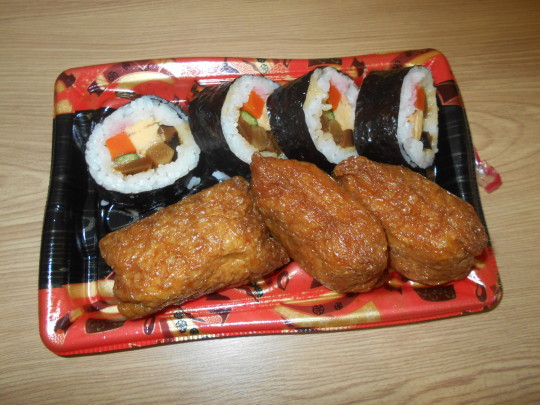
Sushi rolls. Sukeroku-zushi is a combination of two types of sushi: Inari-zushi, which is rice wrapped in seasoned fried tofu, and Temaki-zushi, which is rice wrapped in seaweed and ingredients (egg, cucumber, burdock, etc.). "Sukeroku" is taken from the name of a traditional Japanese performing art, Kabuki. Cheaper than nigiri sushi, you can get it at a reasonable price. And delicious.
助六寿司(料理)
巻き寿司。味付けした油揚げでご飯を包んだ「イナリ寿司」と、具材(卵、キュウリ、ゴボウなど)とご飯を海苔で巻いた「手巻き寿司」の2種類を合わせて助六寿司と言う。「助六」とは、日本の伝統芸能:歌舞伎の演目名から取っている。握り寿司より安く、お手頃な値段で入手できる。そして美味しい。
(2023.02.16)
8 notes
·
View notes
Photo

A true #Kaiseki #Omakase & #Whisky Appreciation Dinner with a top Kaiseki chef who hails from #Sapporo #Hokkaido #Japan and superbly paired with top-notch cutting edge whiskies from the Nagano and Kagoshima region consisting of #iwai #mars Manzanilla single malt Komagatake and single malt Tsunuki - astonishingly smooth and awesome! Considered the epitome of Japanese cuisine, Chef Saitoh-san, uses his Kaiseki and Omasake technique to showcase his title as the grand master of Japanese cuisine, and he came to Singapore, out of his own desire, to share the appeals of traditional Japanese cuisine, which is recognized as a UNESCO Intangible Cultural Heritage. Saitoh-san uses his professional experience and discerning eye to procure only the finest ingredients. This ability is vital in Japanese cuisine where much emphasis is placed on seasonality and the ability to bring out the best of every ingredient. Seasonal fruits and vegetables that are usually not easily obtained, as well as fish and meat of the highest quality, are procured from all over Japan. The Tasting Panel were thoroughly spoilt with an 8-course menu which was well curated with the 4 distinct whiskys on-taste at each tier within the degustation. My personal favorites were the sashimi - whiskey aburi snapper, scallop and botan shrimp… temaki hand roll, charcoal grilled kurobuta black pork infused with whiskey… and the chuturo sushi.. i like the way how the appetizer was being assembled in a kaiseki-formatted provision and the motivation behind the chef’s hand whipped matcha.. truly one of the best whiskey pairing dinners I have ever had.. @sushi.sei.sg @rosettemedia @rosett_asia The quality was impeccable, the ingredients super fresh, and sashimi well-structured.. my media rating is at 9/10, much higher than most omakases that i have tasted at well known establishments in Asia, Shanghai, Ho Chi Minh and Singapore. . . #love #instagood #fashion #beautiful #happy #art #photography #style #travel #life #cute #hiso #luxury #lifestyle #SGLifestyle #like4like #photooftheday #picoftheday #instamood #ooishi (at Holiday Inn Singapore Orchard City Centre) https://www.instagram.com/p/CpCaIIju92m/?igshid=NGJjMDIxMWI=
#kaiseki#omakase#whisky#sapporo#hokkaido#japan#iwai#mars#love#instagood#fashion#beautiful#happy#art#photography#style#travel#life#cute#hiso#luxury#lifestyle#sglifestyle#like4like#photooftheday#picoftheday#instamood#ooishi
4 notes
·
View notes
Note
What's your favorite food?
I do love sushi, sashimi, and temaki too, I’m a huge fan of japanese food as a whole, the combinations are near endless and they’re all so rich and tasty, when cooked correctly with fresh and clean ingredients of course, I haven’t had it in a good while though
#chubby#fat#gaining weight on purpose#gaining fat#gaining kink#muscle gainer#fat belly#fatty#feedee belly#feedee encouragement#make me fatter#bhm#weight gain#bhm weight gain
1 note
·
View note
Text
7 Delicious Finger Foods for Your Next Catering Event
Finger foods are the perfect solution for catering Melbourne to various tastes at your next event. Whether it is a corporate function, wedding, or intimate gathering, finger foods offer a convenient and delicious way to serve a wide range of flavours and options for your guests. Whatever food you want your visitors to taste, the right selection can elevate any occasion. To help you, here are some delectable finger foods that are sure to impress and satisfy everyone at your event:
Sushi
Sushi is a traditional Japanese dish that has gained worldwide popularity for its fresh flavours, artistic presentation, and cultural significance. At its core, sushi combines vinegared rice (shari) with various toppings and fillings (neta), such as seafood, vegetables, and occasionally tropical fruits. It is celebrated for its balance of taste, texture, and visual appeal, making it not just a meal but a gastronomic experience.
Types of sushi include:
Nigiri - hand-pressed rice topped with a slice of fish or other ingredients. Common toppings include tuna, salmon, shrimp, and eel.
Sashimi - thinly sliced raw fish or seafood, served without rice. Often paired with wasabi, soy sauce, and garnishes like shredded daikon radish.
Maki - it is a rolled sushi made by wrapping rice and fillings in a sheet of nori (seaweed) and slicing it into bite-sized pieces. Some of its types are hosomaki, futomaki, and uramaki.
Temaki - this one is a cone-shaped sushi wrapped in nori and filled with rice and various ingredients. Eaten by hand and ideal for casual settings.
Chirashi - a bowl of sushi rice topped with sashimi and garnishes. It is often served as a quick and customisable option.
Inari - sweet, deep-fried tofu pouches stuffed with sushi rice. A vegetarian-friendly choice.
Peppered Beef Crostini
Peppered beef crostini is an appetiser that combines savoury, tender beef with crispy, golden crostini. This dish is perfect for parties, holiday gatherings, or as a starter for an elegant dinner. Its combination of flavours and textures of crunchy bread, tender beef, and flavorful toppings, makes it a crowd-pleaser.
Kingfish Ceviche
Kingfish ceviche is a vibrant and refreshing dish that highlights the delicate flavour of kingfish (yellowtail or Spanish mackerel) with the zesty tang of citrus and fresh herbs. This dish is ideal as a light appetiser or a centrepiece for a summer gathering, showcasing the beauty of fresh seafood with bright, bold flavours.
Remember that fresh fish must be used. It is also a must not to over-marinate it and balance its acidity. Serving it immediately will also make it enjoyed fresh by guests.
Prosciutto Wrapped Chicken Roulade
Prosciutto wrapped chicken roulade is an elegant and flavorful dish that combines juicy chicken breast, savoury prosciutto, and a delicious filling. The roulade is seared and baked to perfection, creating a stunning centrepiece for a dinner party or a special family meal. To make it perfect, it is better to pair the roulade with roasted vegetables, mashed potatoes, or a crisp green salad for a complete meal. Serve with a glass of white wine, such as Chardonnay or Sauvignon Blanc, to complement the dish's rich flavours.
Goats Cheese Tartlet
Goat's cheese tartlets are a delightful appetiser or light meal that combines the creamy tanginess of goat's cheese with flaky pastry and complementary flavours like caramelised onions, herbs, or roasted vegetables. Before serving, garnish with fresh herbs like thyme, parsley, or microgreens for a touch of colour and flavour. Remember to serve it warm or at room temperature as an appetiser, side dish, or light main.
Pumpkin, Sage & Lemon Arancini
Pumpkin, sage, and lemon arancini are crispy, golden risotto balls that combine the creamy sweetness of pumpkin, the earthy aroma of sage, and the bright zestiness of lemon. Perfect as an appetiser, snack, or party food, these arancini offer a delicious twist on the traditional Italian dish.
Vegetable Gyoza
Vegetable gyoza are Japanese dumplings filled with a savoury mixture of fresh vegetables, wrapped in thin dough, and cooked to golden perfection. They are traditionally pan-fried and steamed for a crispy bottom and tender top. These delightful dumplings are perfect as an appetiser, snack, or main dish, served with a tangy dipping sauce.
Here are other finger foods you can have in your next catering event:
Sriracha Macaroni Cheese Bites
Chilli Garlic Prawns
Pork & Fennel Sausage Roll
Thai Vegetable Spring Rolls
Pork & Water Chestnut Shu Mai
With these finger food options, you can create a catering menu that appeals to every guest, offering a variety of tastes, textures, and dietary preferences. From seafood lovers to vegetarians, these bite-sized treats are a convenient and stylish way to make your event memorable. Whether you are looking to impress with sophisticated appetisers or indulge in comforting bites, finger foods ensure that everyone will find something to enjoy.
0 notes
Text
A Complete Guide to Buying a Sushi Roller
New Post has been published on https://thekitchnpro.com/a-complete-guide-to-buying-a-sushi-roller/
A Complete Guide to Buying a Sushi Roller

A sushi roller (or nigiri sushi roller) is an essential tool in creating delicious and uniform sushi rolls. And it’s something you don’t want to buy cheaply or without knowing what you need. What features should you look for? What makes one brand better than another? Find out everything you need to know about buying a sushi roller here. With our comprehensive guide to the best sushi rollers on the market.
How Does a Sushi Roller Work?
The basic idea behind sushi roller making is quite simple. As with many classic culinary techniques, sushi rolling has its roots in ancient China, although it wasn’t until Edo Period Japan that it evolved into its modern form. Typically, skilled chefs will begin with rice that has been seasoned with rice vinegar and salt. The prepared rice is then pressed into a block using special wooden paddles known as makisu before being rolled out flat with small wooden rods called makiotoshi which are roughly 10 centimeters long and tapered from 1 centimeter in diameter at one end to 3 or 4 millimeters at the other end.
Buy Now!
Types of Rolls Rolled by Sushi Roller Makers
The materials that sushi makers are made from vary considerably. Many are stainless steel or cast iron, which means that they are very strong but also quite heavy. However, if you plan on transporting your sushi maker frequently, one of these might not be ideal for you. If so, there are many available models made from lighter materials such as plastic or aluminum. The advantage of buying an aluminum model is that it’s much lighter than others and will be easier to transport. However, aluminum can often result in unevenly shaped rolls so it’s something to bear in mind when looking at different models.
There are also bamboo sushi makers available; although aesthetically pleasing, their practicality is questionable due to them becoming too slippery and deformed after repeated use. Wooden sushi makers should never be used; because of moisture levels, wooden utensils cannot be sterilized properly making them unfit for use around food products. Why You Should Buy a Sushi Maker: A good alternative to conventional rolling mats could prove useful depending on what type of fillings you like to put inside your sushi rolls. For example, if you prefer softer ingredients over harder ones, using a roller could enable them to retain their natural texture more easily compared with using rice paper alone.
Buy Now!
How to Choose the Best Sushi Roller
When it comes to buying a sushi roller, there are several things you should look for. First and foremost, you’ll want one that’s reliable and made from good materials. It should also be easy to use and easy to clean. The best sushi rollers will have both nylon and silicone layers so it can easily be used for both rice and fish, whether sushi or temaki hand rolls. You’ll also want to consider convenience. You won’t be able to toss your machine in your bag, so plan on how you’ll store it when not in use.
And finally always read user reviews before investing in any product. These will help give you a better idea of what other people think of their experience with each brand. There are some brands that stand out as being best-sellers, but everyone’s needs and preferences vary. Make sure you buy something that will work well for your kitchen!
Buy Now!
Steps to Making Delicious and Presentable Sushi Rolls
The sushi roller makes it easy for you to make perfect rolls every time. There are many types of sushi rollers on sale; they all work essentially in the same way. The key difference is that some come with extra features such as built-in sharpeners or devices that can julienne vegetables and cut them into thin strips. These extra features may be necessary for advanced chefs, but beginners should stick with simple models, which can be purchased for under $50. To use a sushi roller correctly, follow these steps 1) Gather all your ingredients together. You will need one cup of rice per roll, so if you want 4 rolls, you will need 2 cups of rice. you might even want to plan for leftovers.
For each quart (or liter) of water used when boiling your rice, add 1/2 teaspoon salt and 1 tablespoon sugar to help give your rice a delicious flavor and texture. Bring enough water to boil to cook your chosen type of rice thoroughly before placing it in an airtight container until needed. Then gather up all your fillings from carrots, cucumbers, avocados, and any other fruits or vegetables you have at home that go well in sushi. You will also need a pack of nori sheets that have been precut into 10 x 7-inch rectangles. It’s easiest to buy precut sheets, but if you find it hard to find pre-cut sheets where you live, just buy big rectangular pieces of seaweed and cut them down yourself after purchase. Finally, get your chopsticks ready!
0 notes
Text
been a little obsessed with making spicy crab bowls lately since we usually have like 90% of the ingredients on hand. surimi crab is less expensive than beef in my area and takes less time to prepare which is a nice bonus. taking like 2 extra steps to have it over fresh sushi rice really takes it to another level.. i should take pictures next time we make it.
no measurements, just vibes on this one.
shred surimi crab, mix with mayo & sriracha to taste. add a little sesame oil, add crushed seaweed & sesame seeds and mix.
make sushi rice. serve in a bowl with the crab mix on top.
add avocado on the side
top everything with more sesame seeds or another crunchy topping
it's probably ok with regular rice too but the rice vinegar adds a lot to the whole experience. i think it would be good with some secondary sauce like eel sauce maybe... also probably good as temaki or something if you wanted to present it nicely.
0 notes
Text
The Magic Of Traditional And Fusion Sushi And What The Difference
Imagine walking into the serene of a Japanese restaurant clean air, unswayed movements of an exacting sushi chef. A traditional world, according to the sushi, is a world of extremes focusing on that which goes by freshness, seasonality, and balancing the tastes of the elements just right. Every bite of the best sushi in Victoria dwells within plainness, allowing even the most beautiful ingredients to declare their case. The Elegance Of Traditional Sushi Traditional sushi is one of the best sushi in Victoria and also has a specific format. Nigiri (hand-pressed vinegared rice, commonly formed with a topping in the form of a piece of fish). On the other hand, sashimi (almost every invented kind of thinly sliced, raw, unsullied fish). Meanwhile, uramaki (literally, "inside-out rolls," commonly meant inside-outside rolls with seaweed inside the roll) and Temaki (hand roll, cone-shaped, filled with rice, fish, and vegetables). A World Of Creative Combinations Everyone gets excited by a bit of adventure. Some thrill-inclined daredevils turn towards fusion sushi, which in one place can explode in color and the mouth with fresh, exotic-tasting cuisine. Think spicy mayonnaise, ripe avocado, or teriyaki-slicked salmon. The true chef pulls culinary elements from as far as across Latin America, Southeast Asia, and beyond in a taste bud tango all their own. But then again, as a result, you get one of the best sushi in Victoria with new flavor profiles and a menu of deliciousness. Conclusion Everyone can experience the best sushi in Victoria. You can enjoy a traditional meal with artistry and age-old techniques. Glowing fish flakes dotting over vinegared rice, anointed with just a whisper of Wasabi and ginger. Or, try fusion sushi with global influences. You don't have to choose - sushi offers something for everyone. True fusion chefs, on the other hand, take things a tad bit further. To know more about Best Sushi Victoria please visit the website.
0 notes
Text
My top three memorable moments of February.
Since the second month of the year is over. I decided to do this post what I did in February.
Making my own ice cream sundae at Le Meridian Hotel:
After dinner on the eve of Chinese New Year, I decided to make myself an ice cream sundae by scooping out medium scoops of Vanilla, Chocolate, and Strawberry, adding a fudgy brownie, gummy bears, three of the Hershey's syrups including chocolate from the fountain, Golden Smarties, strawberry, marshmallow, and a Kit Kat wafer to top it all up.
I wanted to add the chocolate bark, but it was enough for me, as I would get a sugar rush and have cavities in my teeth. So, I decided not to get any more toppings as my mom would scold me when she got back from Taiping.
As I sat down to eat my dessert, I tried the brownie paired with the ice cream coated with the toppings I selected. The best part was selecting my own ingredients on what I could come with instead of copying someone's DIY bowl of ice cream.
Once the Reunion dinner was over, I was full of eating my sweet treat, I remembered not to add a lot of ingredients to the Sundae and learned to take only the things I could finish instead of wasting them.
Hopefully, next year I will learn my lesson about what I can eat instead of throwing away my food into the trash and being mean to the unfortunate people who can't afford to eat at a nice restaurant.
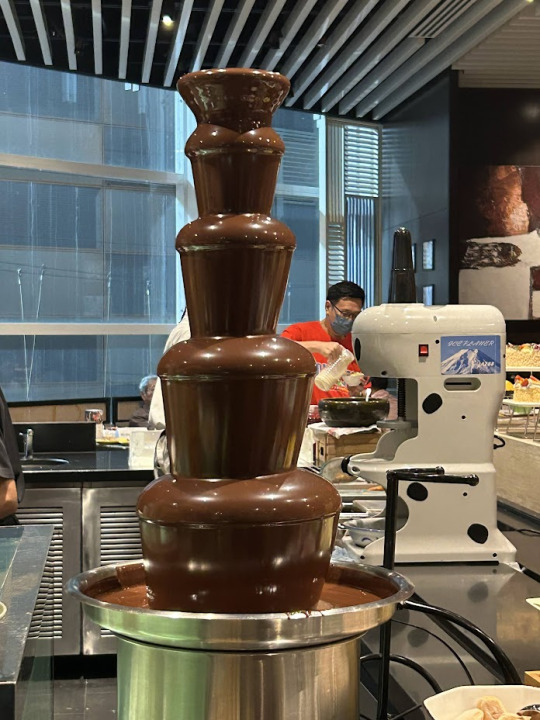
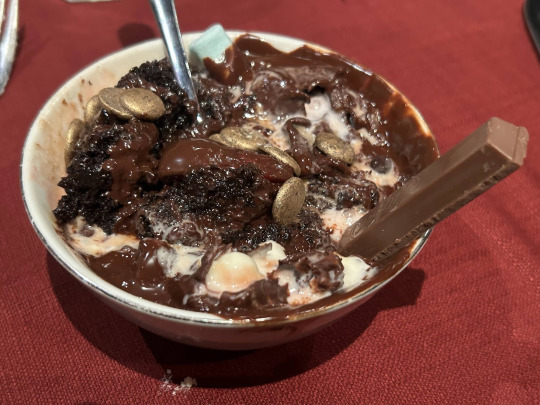
2. Trying out Senjyu Japanese restaurant in One Utama for the first time:
On Thursday after Valentine's Day. I decided to watch the Cantonese version of Disney Pixar's Turning Red. Once we got to TGV Cinemas to get the tickets, we found out that there were no regular seats available to watch the movie as there were only Junior seats available. After hearing the news, I was sad, that I didn't get a chance to watch the Cantonese version of the movie as there were too many kids playing on the playground.
To cheer myself up, I decided to eat at Senjyu, the newest Japanese restaurant that recently opened one month ago. Once we got to this place, I ordered the Spicy Salmon Mayo Temaki Taco with Shimchi Yakiniku Don set with a citrusy and icy Lemonade Bliss drink.
The taco which was made with rice and seaweed coated in a tempura batter had an excellent crunch that paired perfectly with the spicy salmon and the shredded tamago had a good texture that reminded me of a burrito mixed with sushi that gave it a nutty and irresistible texture.

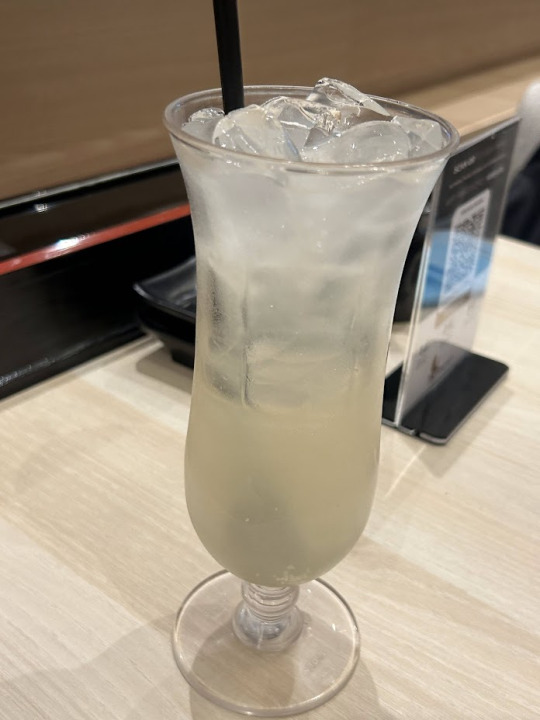

As for my dad, he ordered the Hotate and Salmon Mentai kettle rice set. The Japanese Scallops were delicious and not so spicy including the salmon seared with Mentaiko sauce that makes it a perfect pairing when being eaten in one bite.
The Sashimi was one of the best side dishes that we ate with our meals. The Salmon was tasty and great while the cut-up fruits and Chawanmushi were savory along with the flower-shaped carrot, grated imitation crab, and eggy custard which was on the sweeter side when being served hot and fresh.
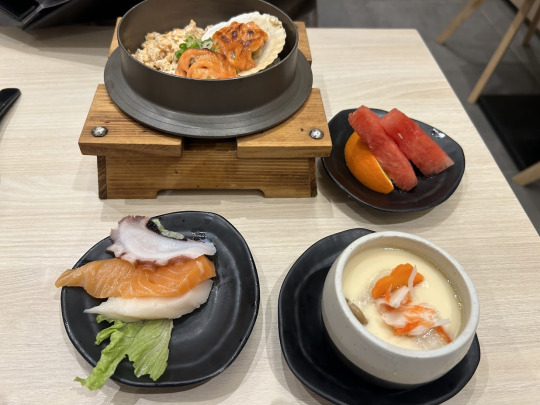
Overall, I gave this Japanese restaurant eight stars due to their homemade high-quality recipes, and peaceful ambiance. And next time, when I eat at the Japanese restaurant again, hopefully, I will try their Gyoza dry ramen with Unakyu Sushi Maki.
3. Lunch at the Teddy Cafe:
Four days ago, I decided to go to the Teddy Cafe for a Sunday lunch after working on some of my assignments. After arriving at this place in the afternoon, I saw a white teddy carrying a gift box with a bouquet, a miniature teddy in an ice cream cone, and two pink teddy bears with a lemon wedge hat holding a white heart with a happy little cub waving hello to the people who come into the cafe.

The decorated restaurant which had many teddies was excellent as it was suitable for people of all ages to enjoy eating at this cafe. I also liked the dressed-up teddy toys in different outfits such as Snow White, the Prince, Kawaii style bear, and many other clothing for the cute bears.




As we found a table, we ordered the Nachos with Tom Yum Gravy, teddy-shaped garlic rice with grilled chicken, Mango, and Lime blended ice bear drink, and the Teddy beef burger with fries.
The Teddy burger was adorable to devour, especially with the fries and salad. The beef patty was juicy and went well with the veggies, cheese sauce, and mayonnaise. As for the Tom Yum Gravy, it had a spicy kick especially the tomatoes and lime were not too sour and made it a good combo with crispy Nachos.
The grilled chicken, garlic rice, and garden salad with sweet soy dressing sauce were sweet, tasty, and not so garlicky. The Mango and Lime drink topped with a marshmallow bear was excellent as it reminded me of Ice Bear from the show, We Bare Bears.
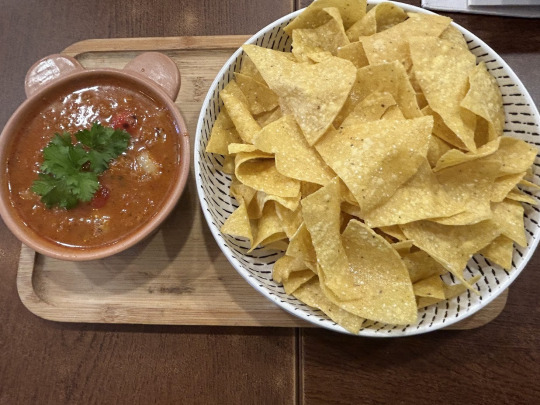

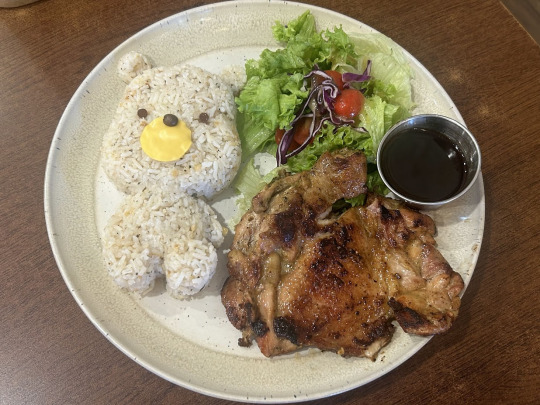
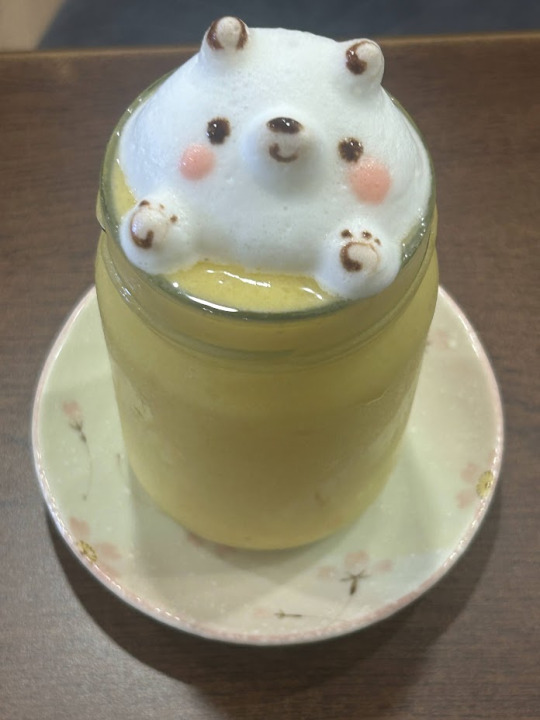
Once we finished our lunch, I ordered an ice cream dessert for two called Teddy on Island. The strawberry ice cream and syrup are very sweet and delicious.
On the other hand, the chocolate waffles were crunchy and delicious when paired with the mixed fruit and the two happy vanilla ice cream bears. I loved the left side of the two waffles being the dirt and the sweet cream being the sand.
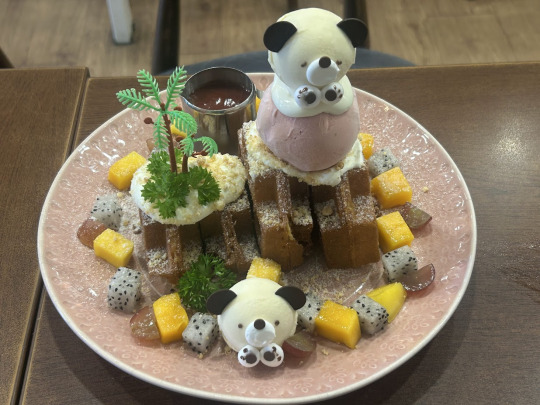
After finishing our dessert, we decided to go home to rest before class tomorrow. This day was the best because I got to see a collection of teddy bears which people of all ages enjoyed. Hopefully, I will come back to this place to have a cup of 3D bear coffee with a bowl of mushroom soup when I have time.
1 note
·
View note
Text
Best Offers of This Week!

Discover the top wallet-friendly offers of the week curated by WhatsOn. Whether it's 2-for-1 cocktails or half-price massages, indulge in budget-friendly options without compromising on quality. Enjoy savings across lifestyle, food, health, wellness, and more. The Butlers Wharf Chop House is offering three dishes for £19 and a drink. Experience the best of British cuisine at Butlers Wharf Chop House, a modern restaurant overlooking the iconic Tower Bridge. Indulge in hearty, ethically sourced dishes, cooked to perfection on open grills and Josper ovens. Don't miss out on the picturesque terrace views! Deal Highlights: - Enjoy over 50% savings at Butlers Wharf Chop House, a modern British restaurant with a focus on quality, locally sourced ingredients. - Dine with panoramic views of the iconic Tower Bridge. Menu Selection: - Starters: Mushrooms on toast, salt beef croquette, Montgomery rarebit soldiers. - Mains: Chicken pie, Chophouse Cheeseburger, Day boat cod. - Dessert: Date & molasses sticky toffee pudding, selection of ice cream and sorbet. Deal Details: - Valid for three courses and a drink in the bar area. - Available Tue-Fri, 12 pm – 3 pm and 5.30 pm – 7 pm. - Bookings must be made 24 hours in advance. Email [email protected] with preferred date and time. - Voucher valid until November 10, 2023. - Menu subject to change. Present voucher upon arrival. For Inamo's endless brunch with food and drinks, save more than 70%. Indulge in a tech-savvy Japanese dining experience at Inamo. Select from Covent Garden or Soho locations and order via interactive tabletops. Play 20+ games while you wait, including air hockey and pool. Get creative and draw on your table! Enjoy an all-you-can-eat feast featuring Sichuan chicken, red dragon roll, and more, with bottomless drinks. Originally £113.35, now just £32.95! Deal Highlights: - Enjoy bottomless Japanese brunch at Inamo Covent Garden or Inamo Soho. - Available Saturdays and Sundays, 11 am - 4 pm. - Interactive tabletops with 20+ games for entertainment. Menu Features: - Sichuan Chicken, Yuzu Pork Belly, Bang Bang Cauliflower, and more. - Assorted sushi rolls including Red Dragon Roll and Vegan Salmon Temaki. Important Details: - 18+ only. - Book by emailing [email protected] with clear voucher details. - Maximum 10 vouchers per booking. - Choose between beer, wine, or fizz for your bottomless drink. - Soft drinks (excluding mocktails) available as non-alcoholic alternative. - 90-minute table sitting with up to three dishes per person at a time. - Orders processed at manager’s discretion. - No changes to bookings within 72 hours of reservation. From £4.50 on Thursdays, enjoy comedy at Soho Central. Transform your Thursdays into a laughter-filled night out at Soho Central Comedy. Brace yourself for a unique stand-up experience, where comedy boundaries are pushed. Witness a fusion of dark humor, clean comedy, and crowd roasts from a talented lineup of comedians. Event Highlights: - Enjoy uproarious sets from both TV comics and up-and-coming stars of the comedy circuit. - Elevate your experience with award-winning Paella and a choice of wine. When and Where: - Dates: October 5 to December 21. - Location: Soho Central Comedy, hosted at the hidden basement of Spanish restaurant Jamon Jamon. - Tickets available from £4.50. Menu Highlights: - Award-winning Paella (Jamon Jamon's signature dish) - Paella Mixta: A Valencian classic featuring a delightful blend of seafood, chicken, rice, and vegetables. Passed down through five generations. - Fully loaded vegetarian option also available. - Enjoy a complimentary Spanish Cava, ice-cold beer, soft drink, or house wine. Important Details: - This voucher grants admission to Soho Central Comedy at Jamon Jamon. - Valid only for the selected date option. - Attendees must be 18 years or older. - Please present your booking confirmation on arrival (digital voucher on your phone suffices, no need for printing). - Arrival time for food: 7 pm. Comedy show: 8 pm (arrive by 7:45 pm). Show concludes at 10:15 pm. - Bookings are subject to availability. - Acts are subject to change. - Location: Jamon Jamon, 3 Caxton Walk, Soho WC2H 8PW. At Lucky Voice, you can rent a karaoke room and have a cocktail for just £17. Experience the ultimate karaoke bonding at Lucky Voice. Reserve a private pod for two hours and enjoy a cutting-edge karaoke system with 11,000+ songs. Plus, savor a complimentary 'Ziggy Stardust' cocktail. Need more drinks? Just hit the 'thirsty' button. Perfect for celebrations or casual hangouts with friends. Deal Highlights: - Private karaoke session at Lucky Voice in five city locations. - Includes a two-hour room hire and access to 11,000+ songs. - Complimentary 'Ziggy Stardust' cocktail included. Ziggy Stardust Cocktail: - Contains sapling vodka, kwai feh lychee liqueur, cocktail foam, raspberry syrup, lemon juice & lychee juice. Important Information: - Valid for one person, minimum 4 people and maximum 12 per booking. - Available Sunday to Wednesday (check location opening times). - Email booking confirmation to [email protected] with clear voucher details. - Voucher valid until October 31, 2023; all bookings must be made by this date. - Age restrictions apply, varying by location (21+ at Lucky Voice Soho, 18+ at other locations). - Karaoke sessions strictly two hours. - Additional items charged at full price. - Soft drink alternative available for Ziggy Stardust cocktail. - See Lucky Voice website for full booking terms and conditions. Read the full article
0 notes
Text
How did sushi originate and evolve over the centuries?

Introduction
Sushi, a timeless Japanese delicacy, has transcended borders to become a global culinary sensation. This delectable dish, consisting of vinegared rice, fresh fish, and a myriad of other delightful ingredients, embodies not only the flavors of Japanese restaurant Toronto Japan but also its rich cultural heritage. The art of sushi-making requires precision, skill, and an appreciation for the finest ingredients. In this article, we embark on a journey into the world of sushi, exploring its history, key ingredients, popular varieties, and the cultural significance it holds for Japan and beyond.
1. A Bite of History: Origins and Evolution
Sushi's origins can be traced back to ancient Southeast Asia, where preserved fish was fermented with rice to preserve it for extended periods. Over the centuries, this culinary practice made its way to Japan, where it gradually evolved into the sushi we know and love today. The Edo period (1603-1868) was a pivotal time for sushi as it transformed from a method of preservation to a delicacy served in exclusive restaurants. Eventually, in the 19th century, Hanaya Yohei revolutionized sushi by serving it in bite-sized portions, creating the foundation for modern sushi etiquette.
2. Key Ingredients: Crafting the Perfect Sushi
2.1. Sushi Rice
At the heart of every sushi roll is the sushi rice, also known as "shari" or "sumeshi." This short-grain, sticky rice is seasoned with a mixture of rice vinegar, sugar, and salt, giving it a distinct tangy flavor. Achieving the perfect texture and balance of flavors is crucial to elevate the overall sushi experience.
2.2. Sashimi-Grade Fish
High-quality, fresh fish is the cornerstone of any outstanding sushi. Chefs meticulously select sashimi-grade fish, which is safe to consume raw due to its handling and freezing processes. Common fish varieties include tuna, salmon, yellowtail, and eel, each boasting a unique flavor profile that tantalizes the taste buds.
2.3. Nori and Other Toppings
Nori, the seaweed sheets used to wrap sushi rolls, adds a delightful umami flavor and provides the necessary structural integrity. Additionally, sushi can be adorned with various toppings such as avocado, cucumber, roe, and even fruits, enabling endless creative possibilities.
3. Types of Sushi: From Classic to Contemporary
3.1. Nigiri Sushi
The epitome of simplicity and elegance, nigiri sushi features a mound of sushi rice topped with a thin slice of fresh fish. This style allows diners to savor the subtle flavors of the fish and the rice without overwhelming distractions.
3.2. Maki Sushi
Maki sushi, or sushi rolls, are a favorite among those who enjoy a variety of flavors and textures in one bite. Nori sheets envelop a layer of sushi rice and various fillings before being rolled and sliced into bite-sized pieces.
3.3. Temaki Sushi
Temaki, translated as "hand roll," is a cone-shaped sushi roll wrapped by hand. It is a popular choice for casual dining or when sushi is enjoyed at home, as its shape allows for easy customization and enjoyment.
3.4. Chirashi Sushi
Chirashi sushi, meaning "scattered sushi," is a beautiful dish featuring a bowl of sushi rice topped with an artful arrangement of sashimi, vegetables, and other garnishes. This type of sushi allows for a visually stunning presentation and a diverse range of flavors.
4. Sushi Around the World: Global Adaptations
Sushi has become a global phenomenon, with various countries adding their own unique twists to this traditional Japanese dish. In the United States, for instance, the California roll—featuring avocado, crab meat, and cucumber—catapulted sushi into mainstream Western cuisine. In Brazil, sushi gained popularity with the introduction of the "hot roll," which includes tempura and cream cheese. These adaptations highlight the versatility of sushi and its ability to adapt to different palates and culinary preferences.
Conclusion
Sushi has transcended cultural boundaries, captivating the world with its delicate flavors, artistic presentations, and rich history. This culinary art form, rooted in Japan, continues to evolve and adapt while maintaining its essence. Whether you prefer the classic nigiri or indulge in contemporary rolls, each bite of sushi offers a glimpse into the meticulous craftsmanship and cultural heritage behind this celebrated dish. So, next time you sit down for a sushi feast, take a moment to appreciate the journey that brought this gastronomic masterpiece to your plate.
1 note
·
View note
Text
Savour Japan's Culinary Delights through Photography
A Visual Journey Through Japan's Rich Cuisine Japan is known for its exquisite cuisine that appeals to both taste buds and visual senses. From tangy sushi rolls to hot bowls of ramen and from crispy tempura dishes to comforting udon noodle soups, Japanese cuisine never fails to surprise and delight. Through the lens of photography, let's take a visual journey through Japan's rich culinary culture. Sushi and Sashimi Sushi and sashimi are the highlights of Japanese cuisine and epitomize Japan's culinary artistry. Made with the freshest fish and seafood, sushi and sashimi are served in beautifully arranged platters that are a feast for the eyes. From the bright hues of tuna to the soft pink of squid and the deep red of salmon, these raw fish dishes are as gorgeous as they are delicious. Ramen and Udon Noodles Ramen and udon noodles are soul-comforting dishes that are perfect for warming up and filling up. Served in steaming hot broth, ramen noodles are topped with an array of ingredients such as meat, soft-boiled eggs, and seaweed for a hearty and flavorful meal. Meanwhile, udon noodles, thicker and chewier than ramen noodles, are paired with various toppings in savory broths, making them a popular comfort food in Japan. Tempura Tempura, a dish of deep-fried seafood and vegetables, is a popular Japanese food that is beloved for its crispy texture and light batter. From shrimp and squid to sweet potato and green beans, tempura can be served as an appetizer or main dish and is often accompanied by a dipping sauce called tentsuyu. With its golden-brown color and beautiful presentation, tempura is a feast for the eyes and the palate. Bento Boxes Bento boxes are a convenient and visually-appealing way to enjoy a delicious Japanese meal on the go. These compartmentalized lunch boxes are filled with various dishes such as rice, sushi, meat, and vegetables, and are often adorned with colorful garnishes and decorations. Bento boxes are as aesthetically pleasing as they are tasty and are popular with both locals and tourists in Japan. Exploring the Heart of Japanese Cuisine Umami and the Five Basic Flavors The Japanese have been perfecting the art of cooking for centuries, and their cuisine is a treat for the taste buds. The unique and rich flavor of Japanese dishes comes from their use of umami, the fifth basic taste. Umami is described as a savory and meaty taste that enhances the other flavors in a dish. Japanese cuisine also incorporates the other four basic flavors - sweet, sour, salty, and bitter - in perfect balance. Rice - The Staple of Japanese Cuisine Rice is considered the staple food in Japan and is the foundation of most dishes. The Japanese use short-grain rice, which is sticky and has a soft texture when cooked. It is served with a variety of dishes, ranging from sushi to donburi (rice bowls). The Japanese are so passionate about their rice that they have rituals surrounding its cooking and serving. Sushi - The Iconic Japanese Dish Sushi is one of the most iconic Japanese dishes and has gained worldwide popularity. It is a dish made with vinegared rice, topped with raw fish or other seafood, and served with soy sauce and wasabi. Sushi comes in many forms, including nigiri (hand-pressed), maki (rolled), and temaki (hand-rolled). The art of sushi-making takes years of practice to perfect, and the Japanese take pride in their skill. Ramen - Japan's Comfort Food Ramen is considered comfort food in Japan and is a popular dish that is enjoyed by people of all ages. It consists of Chinese-style wheat noodles in a meat or fish-based broth, topped with various ingredients such as sliced pork, vegetables, and egg. Each region in Japan has its unique style of ramen, and the dish can be customized to taste. Tempura - A Deep-Fried Delight Tempura is a dish that consists of battered and deep-fried seafood, vegetables, or meat. The batter is made with flour, egg, and ice-cold water, which gives it a crispy and light texture. Tempura is served with a dipping sauce and grated daikon (radish) on the side. The dish originated in Japan in the 16th century and has become a popular dish worldwide. Matcha - A Traditional Japanese Drink Matcha is a fine powder made from green tea leaves. The leaves are ground into a powder using a stone mill, resulting in a bright green powder. Matcha is a traditional Japanese drink and is used in tea ceremonies. It has a bitter and earthy taste but is revered for its health benefits. Matcha is also used in desserts, giving them a unique flavor and a vibrant green color. In conclusion, Japanese cuisine is a perfect balance of flavors, textures, and colors that are pleasing to the senses. The use of fresh ingredients and unique cooking techniques makes Japanese cuisine stand out in the world of gastronomy. Whether it's sushi, ramen, tempura, or matcha, exploring the heart of Japanese cuisine is a delightful culinary experience. Capturing the Flavors of Sushi and Sashimi Sushi and sashimi are two of Japan's most famous culinary exports. As a food photographer, it is important to capture the unique textures and flavors of these dishes. Here are some tips for capturing the essence of sushi and sashimi through photography: 1. Lighting Lighting is everything when it comes to food photography, and sushi and sashimi are no exception. Use natural light whenever possible to bring out the vibrant colors of the fish. If you are shooting indoors, consider using a softbox or diffuser to create a soft and even light source. 2. Plating The way a dish is presented can greatly affect how appetizing it appears in a photograph. When plating sushi and sashimi, aim for a clean and minimalistic look. Place the fish on a neutral-colored plate and consider using chopsticks or other Japanese tableware to add visual interest. 3. Texture Sushi and sashimi are known for their unique textures, so be sure to showcase this in your photographs. Capture the shiny, smooth surface of the fish as well as the rough texture of the rice. Macro shots can really bring out the details of the food. 4. Composition Composition is key to any successful food photo, and sushi and sashimi are no different. Consider using the rule of thirds to create a visually pleasing image. And don't be afraid to experiment with different angles and perspectives – shooting from above or at a diagonal can add interest to your photo. 5. Focus When photographing sushi and sashimi, it is important to focus on the details. Use a shallow depth of field to blur out any distracting elements in the background and draw attention to the food itself. With these tips in mind, you can capture the mouth-watering flavors of sushi and sashimi in your photographs. Don't be afraid to get creative and try new things – after all, food photography is all about experimentation and pushing boundaries. The Art of Japanese Tea and Sweets One of the most iconic culinary experiences in Japan is the art of traditional Japanese tea ceremonies and sweets. Known as Chado or Sado, the Japanese tea ceremony is a formal and ritualistic way of preparing and serving matcha green tea. In Japan, the art of tea ceremonies is not only about serving tea but also involves creating a peaceful and tranquil environment for guests. The traditional Japanese sweets or wagashi served during tea ceremonies are also an integral part of the experience. Matcha Tea Matcha is a fine powder made from ground green tea leaves and is the main ingredient in Japanese tea ceremonies. The preparation of matcha is precise, and it involves measuring the right amount of tea, using warm water, whisking the mixture, and finally serving the tea in a traditional cup. The taste of matcha is unique, and it is characterized by a rich and robust flavor with a distinct vegetal taste. Matcha is said to have many health benefits, including mental clarity and relaxation. Wagashi Wagashi is a traditional Japanese sweet that is served during tea ceremonies and special occasions. The sweets are made using various ingredients, including rice flour, sweet adzuki bean paste, and sugar. The wagashi sweets are often colorful and intricately designed, representing the four seasons and natural elements. Some of the most famous wagashi sweets are mochi, yokan, and dango. The texture and taste of wagashi are delicate, and it is meant to complement the bitter taste of matcha tea. Where to experience Chado The best way to experience the art of Japanese tea ceremonies and sweets is by visiting a traditional tea house or gardens in Japan. Tokyo's Meiji Shrine Garden and the Uji district in Kyoto are some of the most popular places to experience a tea ceremony. Some hotels and restaurants in Japan also offer the traditional tea ceremonies and sweets as part of their service. It is essential to make a booking in advance to ensure availability. The Conclusion The traditional Japanese tea ceremony is a beautiful and refined art that involves the preparation and serving of matcha tea and wagashi sweets. The experience is not only about the taste but also about creating a peaceful and tranquil environment for the guests. The art of Japanese tea ceremonies and sweets is an essential aspect of Japanese culture, and it is worth experiencing when visiting Japan. From Street Food to Michelin Star Dining Japan's culinary scene is a beautiful blend of tradition and innovation. It has something to offer for everyone, from street food to fine dining. Japanese street food has gained worldwide popularity for its delicious taste and unique presentation. Street vendors offer a variety of dishes, such as Takoyaki (octopus balls), Okonomiyaki (savory pancakes), and Ramen (noodles in soup). If you're looking for something more sophisticated, Japan has the most Michelin-starred restaurants in the world. These restaurants offer a once-in-a-lifetime experience with their exquisite dishes and exceptional service. Some of the Michelin-starred restaurants to try are Sukiyabashi Jiro in Tokyo, Kanda in Tokyo, and Ishikawa in Kyoto. While dining at a Michelin-starred restaurant can be an unforgettable experience, it can also be expensive. If you're on a budget, there are still many affordable options for fine dining in Japan. Kaiseki Ryori is a traditional Japanese multi-course meal that can be found at a variety of price points. It typically includes seasonal and local ingredients and is served in an elegant and artistic manner. Japan's culinary scene is an essential part of its culture and a true delight for foodies. Whether you're on a budget or looking to splurge, there are endless options to explore and savor in Japan. Uncovering the Secrets of Japanese Culinary Traditions The Importance of Seasonality Seasonality is a crucial aspect of Japanese cuisine. Japanese chefs believe that the flavors of food are at their peak during their respective seasons. This principle ensures that Japanese cuisine is always fresh and highlights the natural flavors of the ingredients. For instance, during the spring season, dishes with cherry blossoms and cherry blossoms tea are popular, while summer calls for dishes with matsutake mushrooms and watermelon. Similarly, autumn is the season for persimmons and sweet potatoes, while winter calls for dishes with mikan and oysters. Respectful Cooking In Japanese culture, cooking is considered an art, and it comes with a certain level of respect. This involves respecting the ingredients used in the dishes, as well as the techniques used to prepare them. Japanese culinary traditions use simple cooking techniques to allow the natural flavors of the ingredients to stand out. For example, sushi rice is made with great care by using a complex process of washing and seasoning the rice with vinegar, salt, and sugar. This subtle attention to cooking details is what makes Japanese cuisine so unique. The Role of Umami In Japanese culinary traditions, umami is regarded as the taste of bliss. It is the fifth taste, along with sweet, sour, bitter, and salty. Umami is often described as a savory taste, and it is found in many Japanese dishes. The taste of umami comes from amino acids such as glutamic acid found in soy sauce, miso, and seaweed. The role of umami in Japanese cuisine is to enhance the natural flavors of ingredients, making them more delicious and adding depth to the dish. Presentation Japanese culinary traditions place a strong emphasis on the presentation of their dishes. Japanese cuisine is known for its precision, and the presentation of each dish is considered an art form. Many Japanese dishes are served on small plates or in small portions, allowing for an array of different dishes to be served during a single meal. The presentation of these dishes often includes seasonal decorations, such as flowers, leaves, or even ice sculptures. This attention to detail is what makes Japanese cuisine not just delicious but also visually stunning. Growing Popularity Japanese cuisine is growing in popularity around the world because of its uniqueness and health benefits. Japanese culinary traditions focus on fresh, natural ingredients and are low in fat, making it a healthier option compared to some other cuisines. Additionally, the use of umami adds a satisfying depth of flavor, while the presentation elevates the dining experience. Today, sushi, ramen, and other Japanese dishes can be found in almost every part of the world, and the popularity of Japanese cuisine continues to rise. Japanese culinary traditions are some of the most revered in the world. The focus on seasonality, respect for cooking, umami, presentation, and growing popularity have contributed to their success. Japanese cuisine is not just delicious but also a feast for the eyes, and it is no wonder that it has become so popular worldwide. Tips and Tricks for Photographing Food in Japan 1. Take pictures in natural lighting: Natural lighting brings out the best in food and its colors. Try to capture your food photographs in daylight. If you have to take pictures at night, try to use ambient lighting or the photography mode on your smartphone that relies on the maximum amount of light in a low-light environment. 2. Experiment with different angles: Try to capture your food in different angles, like overhead, straight-on, or side angle. Experimenting with different angles gives you a variety of unique shots. 3. Take close-up photographs: Close-up photographs of food give viewers an in-depth look at the dish's texture, colors, and ingredients. 4. Use props: Using props, such as utensils, plates, and napkins, gives your picture a story. It makes the picture more interactive and tells a story about your experience. 5. Focus on the presentation: Japan is famous for its presentation. Focus on how the food is presented and the background it's placed on. It brings a new perspective to the picture. 6. Editing: Editing can enhance the picture and make it aesthetically pleasing. Use editing software to adjust saturation, brightness, and contrast. 7. Shoot candid photographs: Try to capture the chef making the food or the waiter serving it. It adds a sense of movement and activity to your photograph. 8. Take pictures of the local food: Japan is famous for its local cuisine. Try to capture the dishes that are unique to the place you're visiting. It gives more context to where you're exploring. 9. Get inspired: Inspiration can come from anywhere. Follow food blogs, watch cooking shows, and take inspiration from social media. It can help in taking creative pictures. 10. Lastly, don't forget to enjoy the food: While taking pictures, don't forget to enjoy the food you are experiencing. If you enjoy it, it will reflect in your photographs, and they will be more intimate and engaging. With these tips, you'll be able to take fabulous food pictures in Japan that are sure to make your culinary adventures more memorable! Read the full article
0 notes
Photo
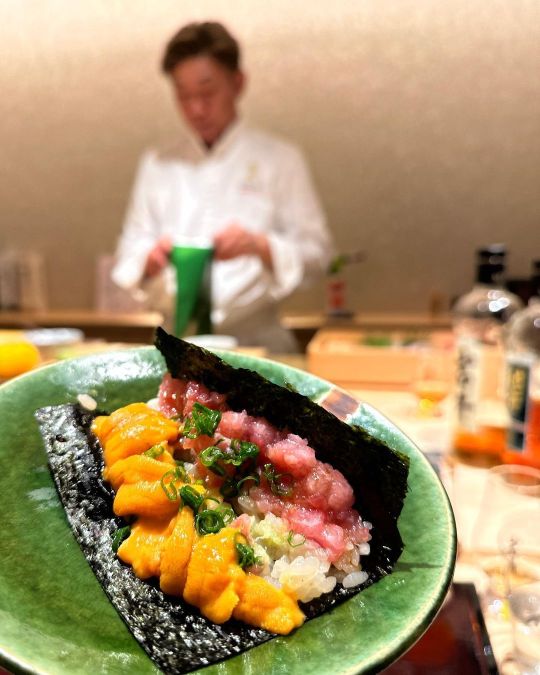
A true #Kaiseki #Omakase & #Whisky Appreciation Dinner with a top Kaiseki chef who hails from #Sapporo #Hokkaido #Japan and superbly paired with top-notch cutting edge whiskies from the Nagano and Kagoshima region consisting of #iwai #mars Manzanilla single malt Komagatake and single malt Tsunuki - astonishingly smooth and awesome! Considered the epitome of Japanese cuisine, Kaiseki renders and preserves tradition and culture and in this regard, Chef Saitoh-san, uses his Kaiseki and Omakase based-techniques to showcase his title as the grand master of Japanese cuisine, and he came to Singapore, out of his own desire, to share the appeals of this traditional Japanese cuisine, which is recognized as a UNESCO Intangible Cultural Heritage. Saitoh-san uses his professional experience and discerning eye to procure only the finest ingredients. This ability is vital in Japanese cuisine where much emphasis is placed on seasonality and the ability to bring out the best of every ingredient. Seasonal fruits and vegetables that are usually not easily obtained, as well as fish and meat of the highest quality, are procured from all over Japan. The Tasting Panel were thoroughly spoilt with an 8-course menu which was well curated with the 4 distinct whiskys en-taste at each course tier within the degustation. My personal favorites were the sashimi - whiskey aburi snapper, scallop and botan shrimp… temaki hand roll, charcoal grilled kurobuta black pork infused with whiskey… and the chuturo sushi.. i like the way how the appetizer was being assembled in a kaiseki-formatted provision and the motivation behind the chef’s hand whipped matcha.. truly one of the best whiskey pairing dinners I have ever had.. @sushi.sei.sg @rosettemedia @rosett_asia The quality was impeccable, the ingredients super fresh, and sashimi firm and shiny.. my media rating is at 9/10, much higher than most kaiseki and Omakase that i have tasted at well known establishments across Asia. . . #love #instagood #fashion #beautiful #happy #art #photography #style #travel #life #cute #hiso #luxury #lifestyle #SGLifestyle #like4like #photooftheday #picoftheday #instamood #ooishi (at Holiday Inn Singapore Orchard City Centre) https://www.instagram.com/p/CpCaIIju92m/?igshid=NGJjMDIxMWI=
#kaiseki#omakase#whisky#sapporo#hokkaido#japan#iwai#mars#love#instagood#fashion#beautiful#happy#art#photography#style#travel#life#cute#hiso#luxury#lifestyle#sglifestyle#like4like#photooftheday#picoftheday#instamood#ooishi
2 notes
·
View notes
Text
Dog-Friendly Sashimi and Sushi Rolls
Having a fun sushi night is a great way to enjoy delicious food and good company. Start by preparing all the ingredients, including rice, seaweed, fresh fish, and various vegetables. Set up a sushi rolling station with bamboo mats, bowls of water, and plenty of nori sheets. Invite your friends or family to join in on the fun and create their own custom sushi rolls. Don't forget to serve some sake or green tea to complete the experience. With everyone rolling and trying different combinations, it's sure to be a night full of laughter and tasty treats. When everyone adds their dogs into the mix, the joy magnifies 10-fold!
There are several types of sushi, including nigiri, maki, temaki, and sashimi. Nigiri is a small ball of rice topped with a slice of raw fish or other seafood. Maki is a roll of sushi wrapped in seaweed and filled with rice, fish, and vegetables. Temaki is a type of sushi that is hand-rolled into a cone shape. Sashimi is not technically sushi, as it does not contain rice, but it is often served alongside sushi and consists of thinly sliced raw fish.
When choosing fish for homemade sushi, it is important to prioritize safety. Look for fish that is labeled as sushi-grade or sashimi-grade, which means that it has been frozen at a certain temperature to kill any potential parasites.Avoid fish that has a foul odor, discoloration, or slimy texture. Remember, it is always a good idea to purchase fish from a reputable and trusted source.
0 notes
Text
Everyday is sushiday!
Hello everyone, my name is Rania Amri and i'm 16 years old. I was 15 when I discovered sushi, it became my favorite food. I like to eat it every sunday, sunday is my sushi day. Most of the time I go with my sister to 'Ocean sushi', which is a restaurant in South- Antwerp. But sometimes I just order it home from a friend that sells it through social media.
Background
A sushi roll is a food of Asian origin that features rice and seafood wrapped in seaweed (nori). Until the end of the twentieth century, sushi rolls were only available in restaurants. Today companies prepare them for retail sale in grocery stores. Although a few of these companies use mechanical sushi makers to shape the rice and add condiments, the best quality sushi rolls are still handmade. An expert sushi chef, can roll and cut six to eight sushi rolls in a matter of moments. It is not the desire for faster production that has led some companies to use the sushi robots; rather it is a shortage of chefs.
History
As early as 500 BC people living in the mountains of Southeast Asia wrapped fish in rice as a means of fermentation. In Japan, alternating layers of carp and rice were placed in a covered jar and kept for up to a year. During this time, the fermenting rice produced lactic acid, which brined the fish. When the jar was opened, the carp was eaten, but the rice was discarded.
According to a Japanese legend, a kind man and woman placed rice in an osprey's nest. When they checked the bird later, they found a fish nestled in the rice. While eating the favor, they noticed that the fermented rice had imparted a distinctive flavor to the fish. Before long, sushi shops were popular spots on the streets of Tokyo. One of the first, Sas Maki Kenukesushi, opened in 1702 and was still operating at the turn of the twentieth century.

How to make sushi:
Half a sheet of nori (seaweed) is spread on the makisu. Then rice is spread on the nori. The shamoji makes a groove in the middle of the rice.
Strips of seafood and/or vegetables are placed in the groove.
The makisu is used to roll the nori around the rice and other ingredients. After rolling, it is manually pressed into a square shape.
The sushi roll is removed from the makisu and cut into pieces (3.8 cm).
The shokunin places the finished sushi rolls on small wooden tables. Fresh slices of ginger are also usually placed on the table, along with a side of wasabi.

Six main types of sushi
There is a difference between Japanese-style sushi and Western-style sushi, so you might find that you prefer one style over the other. There are six main types of sushi found in restaurants.
Sashimi is a very popular dish at sushi restaurants. Sashimi is raw fish, served in long slices known as hira-zukuri. Wasabi, soy sauce, and pickled ginger are also commonly served as garnish.

Nigiri is a type of sushi made up of molded structures of vinegared rice topped with slices of raw fish. Not all nigiri is made with raw fish, although the simplicity of this sushi is loved by many and allows you to enjoy the most flavors from the fish.

Chirashi means ‘scattered’ and is similar to sashimi in many ways. You will be served a bowl of vinegared rice topped with raw fish slices and different garnishes. Fruit and vegetables are sometimes also included in this dish.

Maki is one of the more commonly known types of sushi that you might find in grocery stores and restaurants. Maki is rolled sushi cut into bite-size pieces wrapped in a thin layer of nori. Fillings will be within the Maki and wrapped in vinegared rice within the nori. The filling is made up of vegetables, fish, or other meat.

Uramaki is similar to Maki, although the rice is on the outside of the nori rather than the inside. The nori will be wrapped around the filling. This type of sushi often comes with lots of toppings and sauces that you can dip the pieces into.

Temaki is another type of sushi rolls, although they are made by rolling the nori into a cone shape. This cone is then filled with rice, vegetables, and fish. Also known as hand rolls. Temaki is too large to be eaten with chopsticks and therefore are commonly eaten with your hands.

Sushi rolls have been more westernized than other types of sushi, perhaps for their aesthetically look or that they’re easier to eat. The United States have created their own unique take on Maki sushi, which are very tasty yet not too traditional.

This was all I had to say and for the people who haven't tried sushi yet, give it a try! But don't blame me if you get addicted. 🙂
0 notes